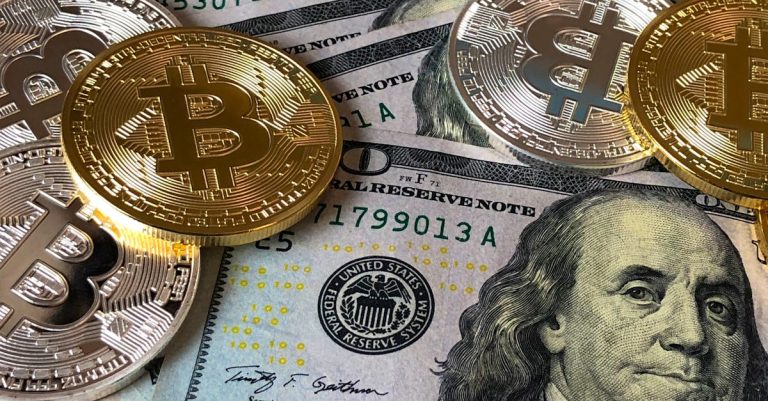Discover Intriguing Coin Facts: History, Value, and Collecting Tips
Coins have been a part of human history for thousands of years, serving as a tangible link to our past. Whether you’re a seasoned numismatist or just curious about the change in your pocket, the world of coins holds fascinating stories and intriguing details. From ancient civilizations to modern minting marvels, each coin has a unique tale to tell.
You’ll discover that coins aren’t just currency; they’re miniature works of art and pieces of history. They can reveal much about the culture, politics, and technology of the time they were made. Dive into the captivating world of coin facts and uncover the secrets behind these small but significant artifacts.
Key Takeaways
- Historical Evolution: Coins have evolved from early electrum pieces in ancient Lydia (600 BCE) to modern coins with advanced minting technologies, reflecting cultural, political, and technological changes.
- Distinct Types: Various types of coins, such as ancient Greek drachmas, Roman denarii, and modern commemorative coins, reveal different historical periods and societal values.
- Materials and Alloys: Coins have been made from various materials, including gold, silver, copper, and nickel. The choice of metal impacts a coin’s durability, appearance, and value.
- Coin Collecting: Coin collecting, or numismatics, includes popular coins like the Morgan Silver Dollar and Lincoln Cents. Established grading systems like the Sheldon Scale determine a coin’s condition and market value.
- Fascinating Facts: Unique aspects of coins include changes in composition, mint marks, error coins, and legal tender laws. These factors contribute to a coin’s numismatic value, often exceeding its face value.
History Of Coins
Coins have evolved significantly since their inception. The birthplace of the first coins is generally attributed to the ancient kingdom of Lydia, now part of modern Turkey, around 600 BCE. These early coins, made of electrum (a natural alloy of gold and silver), were stamped with intricate designs representing various symbols and deities. They marked a revolutionary step in monetary systems, moving from barter to standardized currency.
Greek and Roman Coins
The Greeks further developed coinage, producing coins with distinct designs representing city-states, deities, and famous leaders. Greek coinage was intricate, often showcasing portraits and mythical creatures. These coins not only facilitated trade but also helped spread Greek culture across the Mediterranean.
The Romans adopted and expanded Greek coinage practices. Roman coins, made from gold, silver, and bronze, featured emperors’ portraits and various depictions of military victories and gods. Coins like the denarius became staples in Roman economy, symbolizing stability and governance.
Medieval and Renaissance Coins
During the Medieval period, coin designs became simpler. Feudal lords and kings minted their own coins, leading to diverse styles and standards of quality. Notable coins include the English penny and the French livre.
The Renaissance saw a revival in artistic coin design. The Italian states produced intricate coins like the florin, which displayed detailed portraits and symbols. Leonardo da Vinci and other Renaissance artists contributed to the design of coins, emphasizing an amalgamation of art and functionality.
Modern Coins
By the 18th century, advances in minting technology allowed for more precise and consistent coin production. Coins became standardized, with clear markings indicating denominations and origin. These included widely recognized coins such as the US dollar, the British pound, and the French franc.
In the 20th century, commemorative coins became popular. Countries began issuing coins to celebrate significant events, anniversaries, and cultural milestones. Examples include the Kennedy half-dollar and the Canadian loon dollar.
Throughout history, coins have mirrored the political, cultural, and technological shifts of societies. By studying coins, you gain a deeper understanding of the past, making these small artifacts valuable tools for historians and enthusiasts alike.
Types Of Coins

Coins have played a significant role in human history, deriving their value from materials, design, and use. Various types of coins exist to serve different purposes and represent distinct historical periods.
Ancient Coins
Ancient coins, often made from precious metals like gold, silver, and bronze, highlight the early monetary systems. The Lydian Lion coin, minted in 600 BC, is one of the earliest known examples. Greek drachmas and Roman denarii not only facilitated trade but also displayed rulers and deities, reflecting societal values and political power. These coins provide insights into ancient economies and culture.
Modern Coins
Modern coins, produced using advanced minting technologies, serve as legal tender and commemorative pieces. The US dollar coin and the British pound are standard forms of currency widely used. Commemorative coins celebrate significant events, such as the 50 State Quarters series in the United States. Modern coins often include security features like micro-text and holograms to prevent counterfeiting and ensure authenticity.
Ancient and modern coins embody monetary evolution, showcasing advancements from simple materials to complex designs reflecting broader societal narratives.
Coin Materials
Coins have been crafted from various materials throughout history, each offering unique characteristics and value.
Metals Used
Coins commonly utilize metals like copper, nickel, silver, and gold. Early Lydian coins combined gold and silver, making electrum. Modern coins often mix several metals, creating alloys for durability and cost-effectiveness. For example, the US penny consists of copper-plated zinc, while the nickel includes 75% copper and 25% nickel. High-value commemorative coins sometimes use precious metals like gold and silver, reflecting historical practices.
Common Alloys in Coins:
| Metal | Characteristics | Example Coin |
|---|---|---|
| Copper | Conductive, corrosion-resistant | US Penny |
| Nickel | Hard, corrosion-resistant | US Nickel |
| Silver | Conductive, precious | American Silver Eagle |
| Gold | Malleable, precious | Gold Eagle |
| Electrum | Natural alloy of gold and silver | Lydian Lion |
The choice of metal impacts the coin’s durability, appearance, and value. Central banks and mints continually evaluate materials to balance functionality and cost.
Commemorative Coins
Commemorative coins celebrate significant events, people, and anniversaries. These coins often feature unique designs and materials, distinct from regular circulating currency. The US Mint, for example, issues commemorative coins in gold, silver, and clad compositions, marking occasions like the Olympics, historical milestones, and notable figures.
In 2020, the US Mint released the Women’s Suffrage Centennial Silver Dollar, commemorating the 100th anniversary of the 19th Amendment. Such coins are not only collectibles but also investments, often appreciating over time due to their limited mintage and historical significance.
Commemorative coins from various countries provide insight into cultural values and priorities. For instance, Canada’s Royal Canadian Mint issued coins celebrating the country’s wildlife, featuring intricate designs of animals like the caribou and loon.
When acquiring commemorative coins, always verify their authenticity and research their historical context. Trustworthy sources include official mint websites and reputable coin dealers. Collecting these coins combines numismatic interest with tangible links to history.
Coin Collecting
Coin collecting, also called numismatics, is a popular hobby that involves gathering and studying coins of various kinds. This section dives into some aspects of coin collecting to provide you with detailed insights.
Popular Collectible Coins
Certain coins consistently attract collectors due to their historical significance, rarity, or unique design qualities. For instance, the Morgan Silver Dollar from the late 19th century remains a favorite due to its intricate design and historical context. Another highly sought-after coin is the Saint-Gaudens Double Eagle, a $20 gold piece designed by the renowned sculptor Augustus Saint-Gaudens, minted from 1907 to 1933.
Moreover, Lincoln Cents, particularly the ones minted from 1909 to 1958 (wheat pennies), are popular among collectors for their historical value and variations. Commemorative coins issued by various governments to celebrate significant events or anniversaries also attract a wide range of interest; examples include the Bicentennial Quarters released in 1976 or the American Silver Eagle, first struck in 1986.
Coin Grading Systems
To determine a coin’s value, collectors rely on established grading systems which assess the coin’s condition. The Sheldon Scale, developed by Dr. William Sheldon, is the most widely used system and ranges from 1 to 70, with higher numbers indicating better preservation. For instance, a coin graded as MS-70 (Mint State) is in perfect condition with no signs of wear.
Organizations like the Professional Coin Grading Service (PCGS) and the Numismatic Guaranty Corporation (NGC) provide expert and standardized grading services. These companies encapsulate coins in tamper-evident holders and assign a grade, boosting buyer confidence and often increasing the coin’s market value.
In addition, specialized terms like Proof (PR) and About Uncirculated (AU) are used to describe coins based on their strike quality and level of wear. A Proof coin is specially minted for collectors and typically exhibits a higher level of detail.
By understanding popular collectible coins and the coin grading systems, you can better navigate the field of numismatics and make informed decisions about your collection.
Interesting Coin Facts
Coins have fascinating histories and unique attributes. Here are some intriguing facts about coins that might surprise you:
Composition Changes
Materials used in coinage change over time. For example, the US penny, originally made of copper, now consists of zinc coated with copper. During World War II, due to copper shortages, pennies in 1943 were made of steel and coated with zinc.
Mint Marks
Mint marks indicate where coins were produced. US coins bear mint marks such as “P” for Philadelphia, “D” for Denver, and “S” for San Francisco. These marks affect a coin’s value and collectibility, with certain mint marks being rarer than others.
Oldest Coin
The oldest known coin dates back to the 7th century BCE, minted in Lydia, present-day Turkey. Made of electrum, a gold-silver alloy, these coins played a crucial role in ancient economies and trade.
Commemorative Coins
Commemorative coins honor significant events and individuals. These limited-edition coins often become valuable collectibles. The US Mint regularly releases commemorative coins celebrating historical milestones and cultural icons.
Coin Weights and Sizes
Coin weights and sizes vary globally. For example, the US silver dollar weighs approximately 26.73 grams, while the UK pound coin weighs 8.75 grams. These differences reflect national standards and historical preferences.
Coin Edge Designs
Coin edges have design variations. Some coins have reeded edges, like the US quarter, to deter counterfeiting. Others, like the Euro, can have smooth or ornamental edges, adding to their visual appeal and functionality.
Error Coins
Error coins occur due to minting mistakes. These coins, such as the 1955 doubled die penny, are highly sought after by collectors. Mint errors increase a coin’s market value and rarity.
Numismatic Value
Numismatic value often differs from face value. Factors include rarity, demand, condition, and historical significance. For instance, a 1909-S VDB Lincoln cent can fetch thousands of dollars, far exceeding its one-cent denomination.
Legal Tender Laws
Legal tender laws dictate the use of coins. In the US, for example, businesses aren’t required to accept large quantities of pennies or nickels. These laws ensure practical and standardized transactions in the economy.
Coin Lifespan
The average lifespan of circulating coins varies. US coins typically last around 30 years. Durability depends on the material and usage frequency, with some older coins still in good condition after centuries.
Each fact reveals a unique aspect of coinage. Understanding these highlights reinforces the allure and complexity of numismatics, deepening your appreciation for coins.
Conclusion
Exploring the world of coins offers a fascinating glimpse into history, culture, and artistry. Whether you’re a seasoned numismatist or just starting your collection, understanding the nuances of coin grading, mint marks, and materials can significantly enhance your appreciation. The rich tapestry of facts and historical contexts surrounding coins underscores their enduring value and intrigue. Embrace the journey of coin collecting and discover the stories each piece holds.
Frequently Asked Questions
What is the historical significance of coins?
Coins have been a crucial part of human history, serving as a medium of exchange since ancient Lydia in the 7th century BCE. They reflect cultural values and technological advancements over time.
What are commemorative coins?
Introduced in the 20th century, commemorative coins celebrate notable events, people, or anniversaries. They are often minted in limited quantities and hold both historical and collectible value.
What is numismatics?
Numismatics is the study or collection of currency, including coins, tokens, paper money, and related objects. It is a popular hobby that delves into the history and artistry of currency.
What is the Sheldon Scale?
The Sheldon Scale is a 70-point grading system used to evaluate the condition of coins. It ranges from Poor (P-1) to Perfect Mint State (MS-70).
Who are the PCGS and NGC?
The Professional Coin Grading Service (PCGS) and the Numismatic Guaranty Corporation (NGC) are leading organizations that provide coin grading and authentication services.
What are mint marks?
Mint marks are small letters or symbols on a coin indicating the mint location where the coin was produced, such as ‘D’ for Denver or ‘S’ for San Francisco.
How has the composition of coins changed over time?
Coin compositions have evolved based on the availability of metals and economic factors. For example, many modern coins use less precious metals compared to historical coins.
What is the oldest known coin?
The oldest known coin is from ancient Lydia, dating back to around 600 BCE. It was made of electrum, a natural alloy of gold and silver.
What are error coins?
Error coins result from mistakes during the minting process, such as misstrikes or incorrect metal compositions. They are highly valued by collectors due to their rarity.
What is the difference between numismatic value and face value?
The face value is the nominal value printed on the coin, while the numismatic value is the market value determined by rarity, demand, condition, and historical significance.
Are all coins legal tender?
Legal tender laws vary by country, but generally, most coins issued by a nation’s mint are considered legal tender, meaning they can be used to settle debts.
How long do circulating coins last?
Circulating coins typically last between 25 to 30 years, depending on their material and usage frequency. Coins made of more durable materials like copper-nickel alloys tend to last longer.







 Bitcoin
Bitcoin  Ethereum
Ethereum  Tether
Tether  XRP
XRP  USDC
USDC  TRON
TRON  Lido Staked Ether
Lido Staked Ether  Dogecoin
Dogecoin  Figure Heloc
Figure Heloc  Cardano
Cardano  WhiteBIT Coin
WhiteBIT Coin  Bitcoin Cash
Bitcoin Cash  Wrapped stETH
Wrapped stETH  Wrapped Bitcoin
Wrapped Bitcoin  USDS
USDS  Binance Bridged USDT (BNB Smart Chain)
Binance Bridged USDT (BNB Smart Chain)  Wrapped eETH
Wrapped eETH  Chainlink
Chainlink  Monero
Monero  WETH
WETH  Stellar
Stellar  LEO Token
LEO Token  Zcash
Zcash  Hyperliquid
Hyperliquid  Coinbase Wrapped BTC
Coinbase Wrapped BTC  Ethena USDe
Ethena USDe  Litecoin
Litecoin  Sui
Sui  Avalanche
Avalanche  sUSDS
sUSDS  Hedera
Hedera  Shiba Inu
Shiba Inu  Dai
Dai  USDT0
USDT0  PayPal USD
PayPal USD  Mantle
Mantle  World Liberty Financial
World Liberty Financial  Cronos
Cronos  Toncoin
Toncoin  Ethena Staked USDe
Ethena Staked USDe  Uniswap
Uniswap  Polkadot
Polkadot  Canton
Canton  Aave
Aave  USD1
USD1  MemeCore
MemeCore  Rain
Rain  Bitget Token
Bitget Token